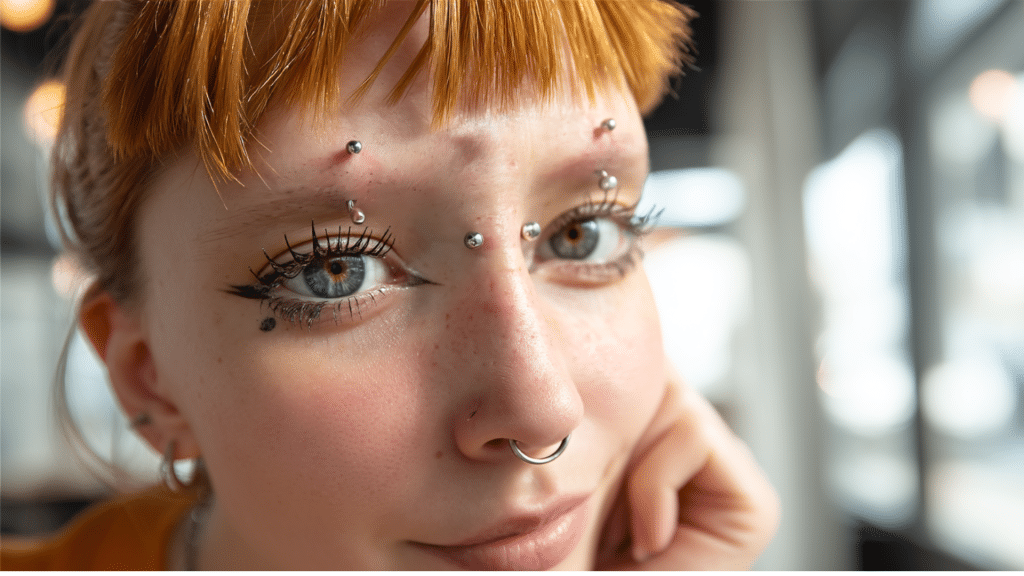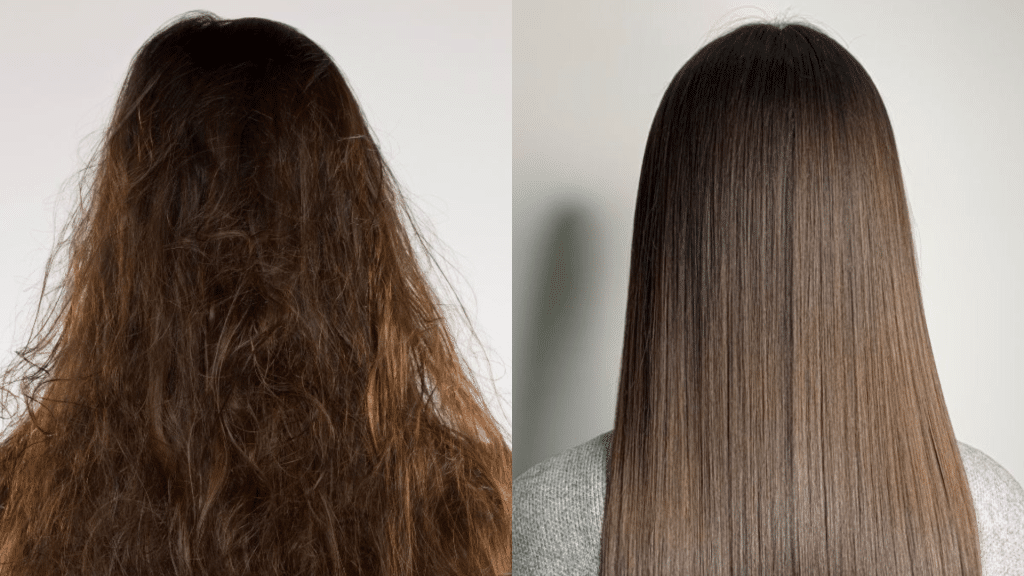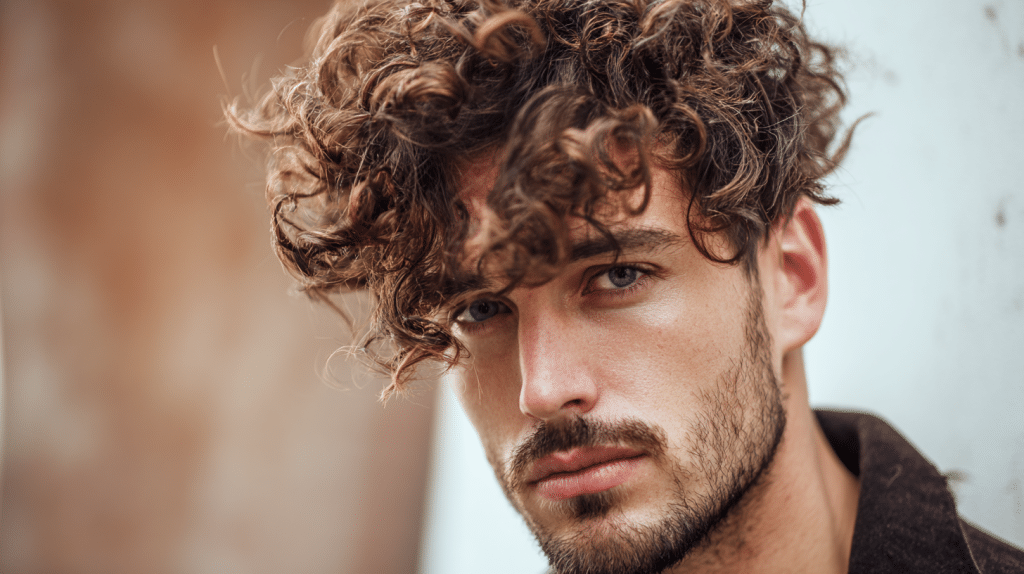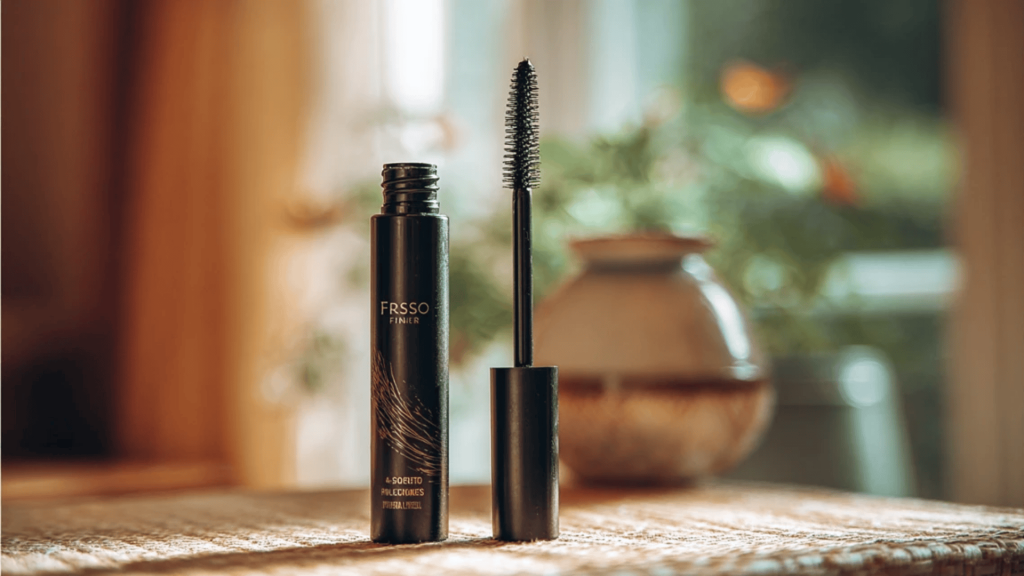Eyebrow piercings have been around for decades, popping up in punk rock scenes and alternative cultures since the 1970s.
When considering your first piercing or just curious about the process, eyebrow piercings offer a relatively low-commitment way to express your personal style.
They heal faster than cartilage piercings, offer tons of jewelry options once settled, and can be easily hidden or removed if needed.
However, like any body modification, they require proper research, quality materials, and dedicated aftercare to avoid complications.
This article will walk through the different styles, what getting pierced feels like, healing timelines, and how to take care of your new piercing.
From choosing the right jewelry materials to recognizing signs of problems, we’ve got you covered with all the essential information to make an informed decision.
What Is an Eyebrow Piercing?
An eyebrow piercing goes through the skin above or around your eyebrow area. It’s technically a surface piercing, which means it goes through flat skin rather than through cartilage like ear piercings.
Most people think it goes through the actual eyebrow bone, but that’s not true at all.
The piercing sits in the soft tissue above your brow ridge. It’s usually placed vertically through the outer third of your eyebrow.
The jewelry sits on top of your skin, creating a cool accent to your natural brow shape.
Eyebrow Piercing Styles
There are three main types of eyebrow piercings to choose from. Each style has its own look and healing challenges, so it’s good to know your options before deciding.
1. Vertical Eyebrow Piercing
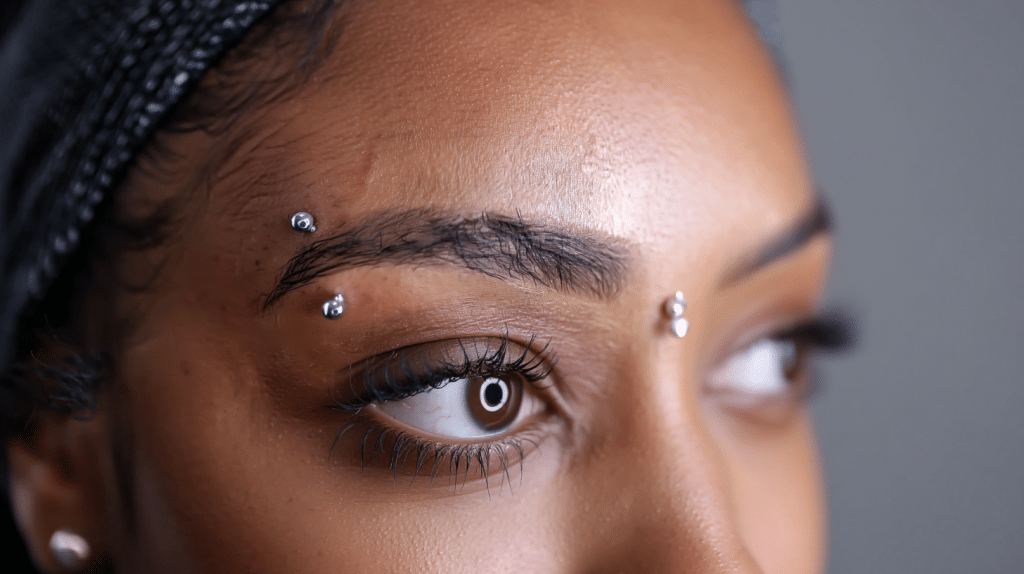
This is the classic style most people think of. The piercing goes straight up and down through your brow area. It’s the most common type and usually the easiest to heal.
2. Horizontal Eyebrow Piercing
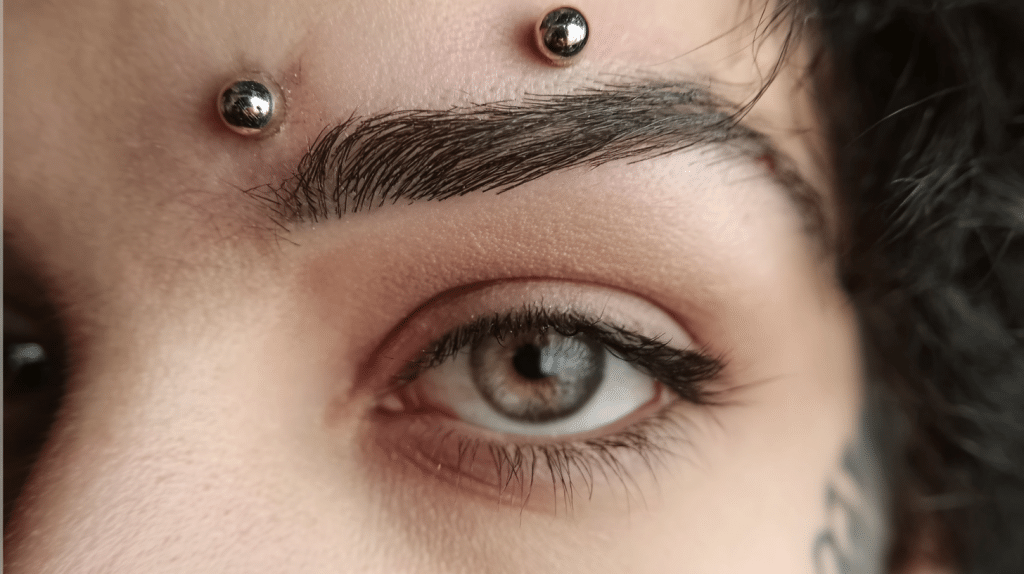
This style runs side to side above your eyebrow. It’s less common and can be trickier to heal. It works well if you want something a bit different from the standard look.
3. Anti-Eyebrow Piercing
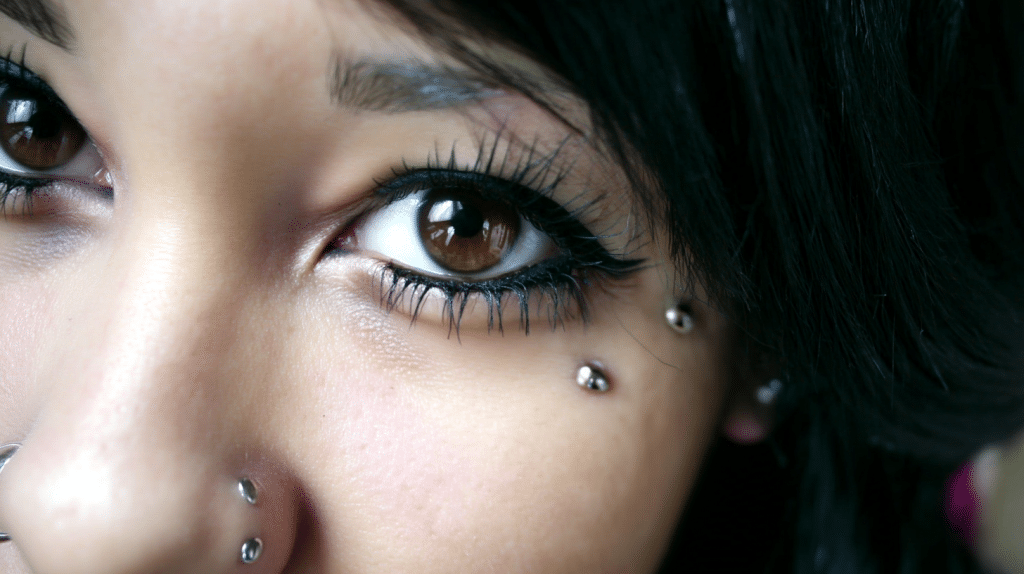
This piercing sits on your upper cheek, below your eye. It’s called “anti” because it’s in the opposite spot from a regular eyebrow piercing. This one needs extra care since it’s close to your eye area.
Most people choose either the left or the right side for their piercing. Some go for both sides for a balanced look. The choice is totally up to your personal style and face shape.
Who is a Good Candidate?
Your facial structure plays a big role in how well an eyebrow piercing will work. People with prominent brow ridges usually have better luck with healing. Thicker skin in the brow area also helps the piercing stay put longer.
Some faces just aren’t built for eyebrow piercings. If you have very flat brows or thin skin, the piercing might reject more easily. Your piercer can check your anatomy and let you know if it’s a good fit.
Think about your lifestyle too. Athletes might have trouble with helmets or protective gear hitting the piercing.
Some jobs don’t allow visible piercings, so you’ll need to consider if you can hide it when needed.
What to Expect When Getting Pierced
Getting an eyebrow piercing is pretty straightforward when you know what’s coming. Here’s what happens from start to finish so you can feel prepared.
- Finding a good piercer is the most important step. Look for someone with lots of experience and great reviews. They should use sterile equipment and follow proper safety procedures.
- The consultation and marking come next. Your piercer will clean the area and mark where the piercing will go. They’ll ask you to approve the placement before starting.
- The actual piercing happens fast – they’ll clamp the skin and push a needle through in one quick motion. Pain-wise, most people rate it around a 4 out of 10.
- The immediate aftereffects are totally normal. Your eyes might water from the sensation, but that’s expected. Expect some swelling and tenderness for the first few days.
Eyebrow Piercing Jewelry 101
Choosing the right jewelry is crucial for healing and comfort. The material and shape of your jewelry can make or break your piercing experience.
1. Jewelry Materials
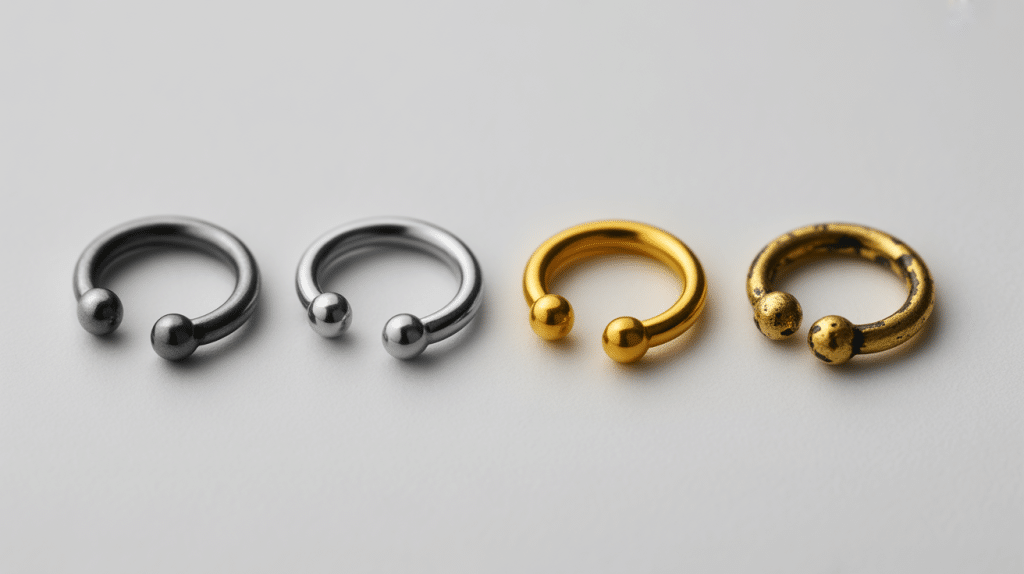
Titanium is the gold standard for new piercings. It’s hypoallergenic and lightweight, making it perfect for sensitive skin.
The main downside is the higher cost, but it’s worth it for problem-free healing.
Surgical Steel is a popular budget-friendly option that works well for most people. However, it contains nickel, which can cause allergic reactions in sensitive individuals.
Choose implant-grade steel only.
Gold looks beautiful, but it must be 14k or higher for body jewelry. Lower quality gold contains alloys that can irritate healing piercings.
Solid gold is expensive but offers a premium look once healed.
Cheap Metals like mystery metal or plated jewelry should be avoided completely. These can cause infections, allergic reactions, and delayed healing.
Never start with bargain jewelry from non-professional sources.
2. Jewelry Shapes
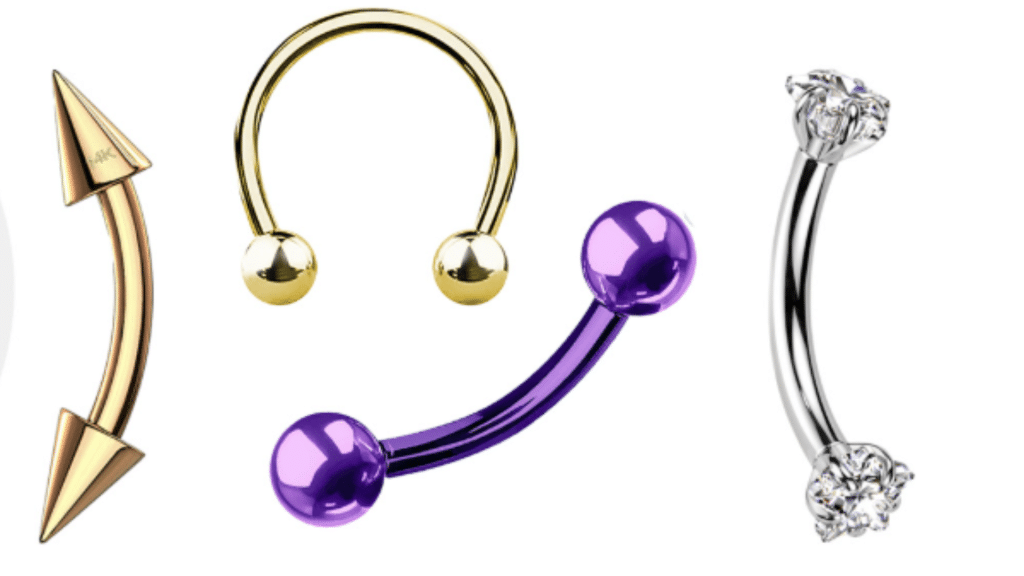
Curved Barbells are the standard choice for eyebrow piercings. They follow your natural brow curve and reduce pressure on the piercing.
The curved design prevents the jewelry from sitting flat against your skin.
Straight Barbells work for some anatomy types, but can create pressure points. They’re more likely to migrate or reject because they don’t match your brow’s natural curve.
Most piercers avoid these for eyebrow placements.
Rings and Hoops look stylish but should only be used in fully healed piercings. They move around more during healing, which can irritate the tissue.
Save these for after your piercing is completely settled.
3. How to Choose the Perfect Match
Here are the key factors to consider when selecting your eyebrow piercing jewelry:
- Skin sensitivity: If you have metal allergies or sensitive skin, consider titanium, even if it’s more expensive – your piercer can perform a quick skin test if you’re unsure about reactions.
- Lifestyle compatibility: Active people should choose secure, low-profile pieces that won’t catch on clothing or gear, while office workers might prefer subtle, professional-looking options.
- Proper sizing: The gauge and length need to fit your anatomy perfectly – too tight causes pressure and swelling, while too loose allows excess movement that slows healing.
Eyebrow Piercing Healing Timeline
Eyebrow piercings take 6 to 8 weeks for basic healing, but full healing can take up to 4 months. Everyone heals at different speeds based on their health, age, and how well they follow aftercare instructions.
| Timeframe | What to Expect | Care Focus |
|---|---|---|
| Week 1 | Most swelling, tenderness, and possible bruising | Gentle cleaning, no touching |
| Weeks 2-4 | Steady improvement, less pain and irritation | Continue the strict cleaning routine |
| Weeks 6-8 | It should feel pretty normal, basic healing complete | Can consider downsizing jewelry |
| 3-4 Months | Full healing, inside tissue has completely settled | Ready for jewelry changes |
Signs of Good Healing:
- Decreasing swelling and redness over time
- No pus or bad odors
- Comfortable movement without pain
- Normal crust formation (part of the healing process)
Red Flags – Contact Your Piercer:
- Increasing redness, heat, or swelling
- Yellow/green discharge with a bad smell
- Severe or worsening pain
- Jewelry appears to move closer to the surface
Eyebrow Piercing Aftercare
Proper aftercare makes the difference between smooth healing and months of problems. Follow these steps religiously for the first few months to keep your piercing healthy.
| DO | DON’T |
|---|---|
| Clean twice daily with sterile saline spray | Use alcohol, hydrogen peroxide, or harsh soaps |
| Pat dry with clean paper towels | Touch or twist the jewelry with dirty hands |
| Sleep on your back or the opposite side | Sleep on the pierced side |
| Change pillowcases frequently | Apply makeup directly on the piercing |
| Let saline soften crusties before gentle removal | Pick at scabs or crusty buildup |
| Keep hair products away from the area | Submerge in pools, hot tubs, or baths |
| Wash your hands before any contact | Use cotton balls or swabs (fibers stick) |
| Contact the piercer if you see problems | Ignore signs of infection or rejection |
Considerations Before Getting a Piercing
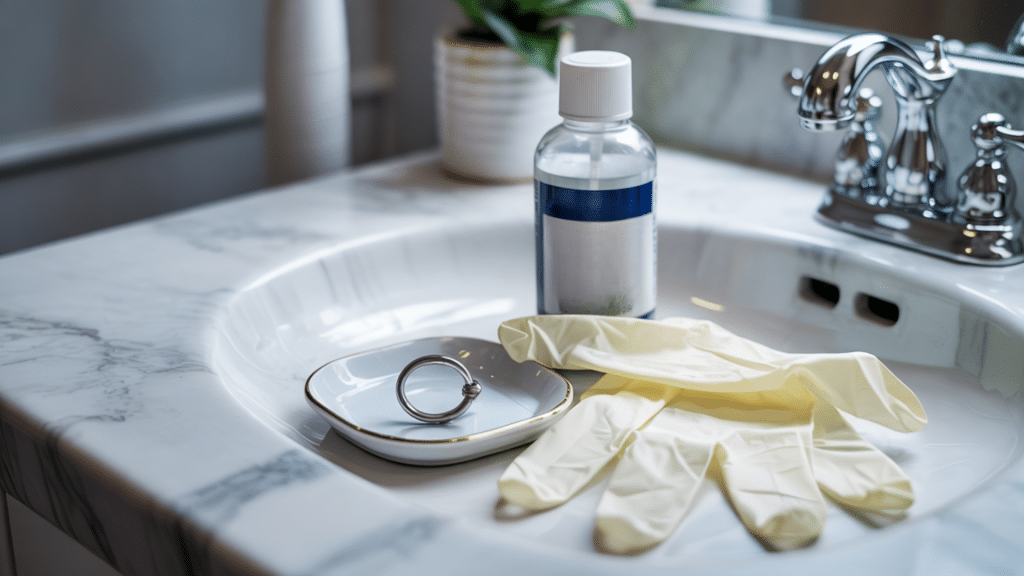
Before committing to an eyebrow piercing, there are several key factors you should understand about maintenance, potential complications, and financial investment.
1. Changing Eyebrow Jewelry Safely
Wait until your piercing is completely healed before changing jewelry – usually 3 to 4 months minimum.
Your piercer can perform the first jewelry change to ensure everything looks good and that your new jewelry fits properly.
To change it yourself, wash your hands thoroughly first, unscrew one end of the barbell slowly, and carefully slide out the old jewelry.
If you feel resistance or pain, stop and see your piercer, since forcing jewelry can cause tears or damage!
2. Risks, Rejection, and Migration
Eyebrow piercings can be rejected because they go through surface skin rather than thicker tissue, with your body pushing the jewelry out over time.
You’ll notice the jewelry sitting closer to the surface, holes getting larger, increased soreness, or visible jewelry through thin skin.
Migration is when the piercing moves from its original spot, and both issues are more common with eyebrow piercings than with other types.
If you catch rejection early, switching to different jewelry might help, but sometimes removal is the best option to prevent bad scarring.
3. Cost Breakdown & Budgeting Tips
Eyebrow piercings typically cost $30 to $80 for the piercing service, with quality starter jewelry adding another $20 to $50. Don’t shop for the cheapest option – experienced piercers and quality jewelry prevent complications that cost way more in the long run.
| Service/Item | Price Range | Notes |
|---|---|---|
| Piercing Service | $30 – $80 | Varies by location and shop reputation |
| Basic Jewelry | $15 – $30 | Surgical steel or basic titanium |
| Premium Jewelry | $50 – $150+ | High-end titanium, gold, or decorative pieces |
| Aftercare Products | $10 – $20 | Saline spray, cleaning supplies |
| Jewelry Upgrades | $20 – $200+ | Optional future purchases |
| Professional Checkups | $0 – $25 | If complications arise |
Final Thoughts: Is Eyebrow Piercing Right for You?
Eyebrow piercings can be a fun way to express your personal style. They’re relatively quick to heal compared to cartilage piercings and offer lots of jewelry options once healed.
The key is finding an experienced piercer and following proper aftercare.
Consider your lifestyle, job requirements, and commitment to aftercare before deciding. Talk to a reputable piercer about your specific anatomy and concerns.
They can give you honest advice about how well this piercing might work for you.
Remember that piercings are a form of body modification that requires ongoing care. But for many people, the self-expression and confidence boost make it totally worth it.
Take your time researching and don’t rush into the decision.

